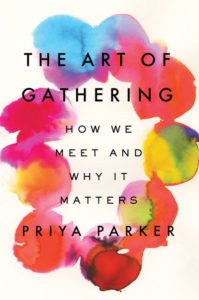
Otherwise, it will lose its meaning and its power.Y ou know when you leave a gathering and you feel inspired, energized, and ready to tackle anything that comes your way? And you know when you leave thinking your time would have been better spent elsewhere? We want to create more of the former – those experiences when people come together with intention and meaning, making connections and sharing ideas.

If you’re going to have a meeting, make sure it’s for a specific purpose and do not make it too routine. The same can be said about gatherings in general. Many of the rituals in our lives that we grow up participating in, such as baby showers, weddings, and bar mitzvahs, have their origins in the past and were created for a different time, but are now being used for a different purpose. The place you gather should serve a purpose. The Justice Center is another example of how the government and law enforcement can work together to solve the community’s problems. The traditional courtroom is designed to surface the truth adversarially the Red Hook center set up an experimental courtroom that allows litigants to interact with the judge personally. The Red Hook Community Justice Center was created to change the way the justice system functions in Red Hook.

We do this even when the gathering is as low-stakes as a networking event. When we don’t examine the deeper assumptions behind why we gather, we end up skipping too quickly to replicating old, stale formats of gathering.

When we skip this step, we end up gathering in ways that don’t serve us, or not connecting when we ought to. The first step to convening people meaningfully is to commit to a bold and sharp purpose. Insights from Chapter 8 Insights from Chapter 1 Insights on Priya Parker's The Art of Gathering


 0 kommentar(er)
0 kommentar(er)
